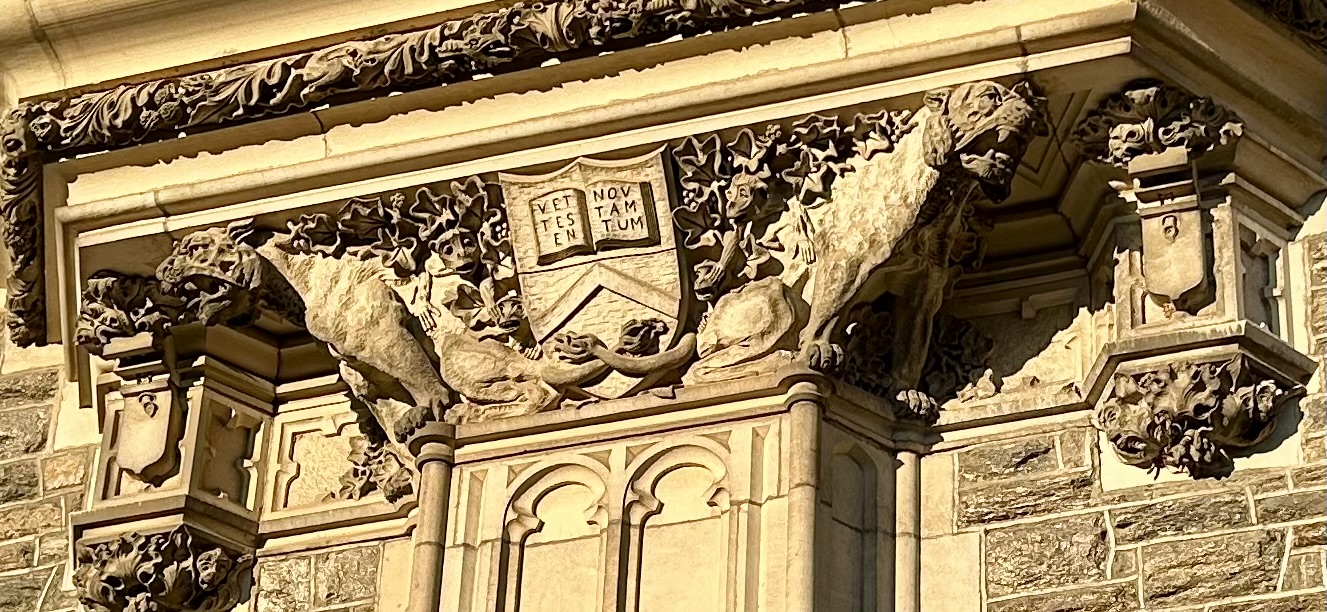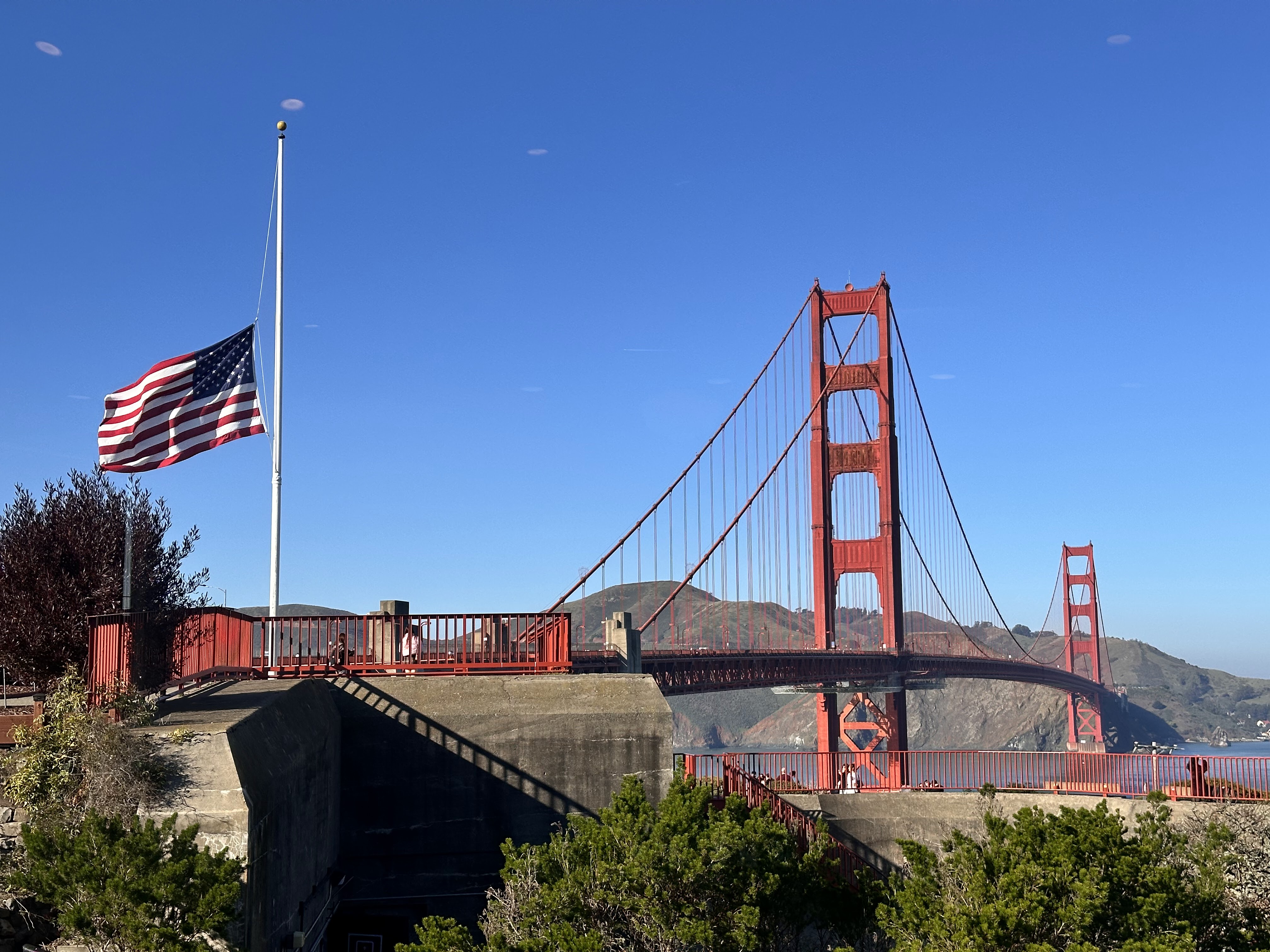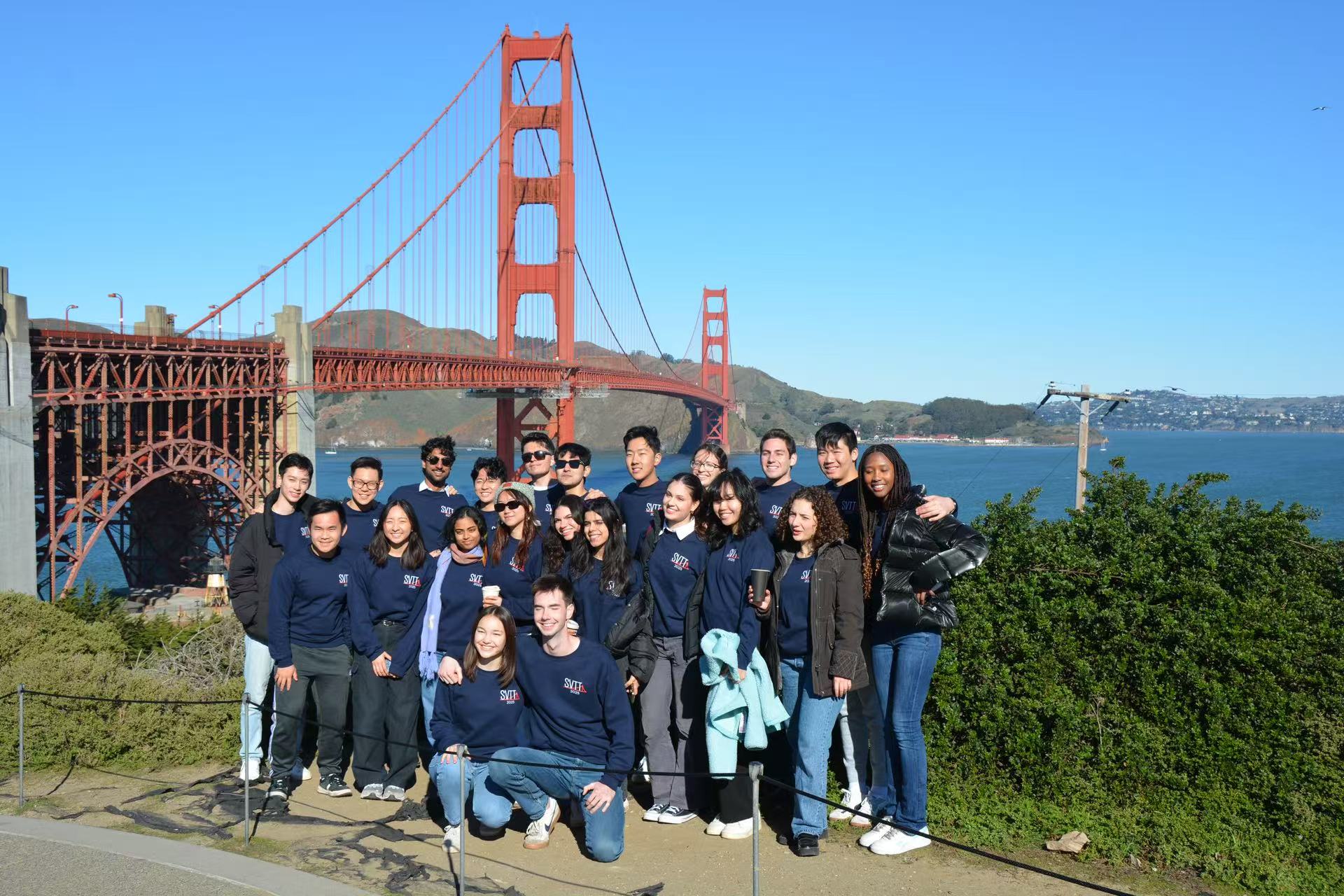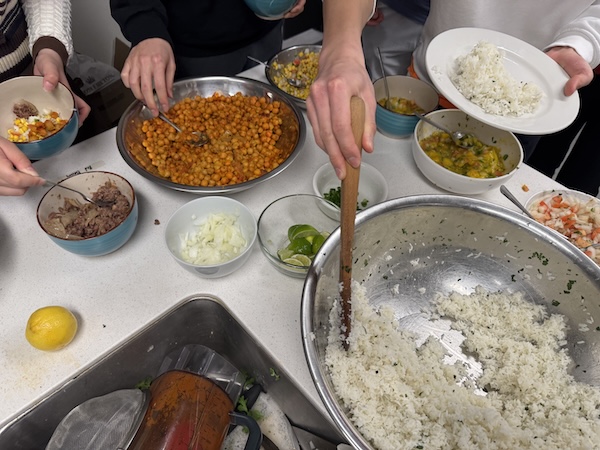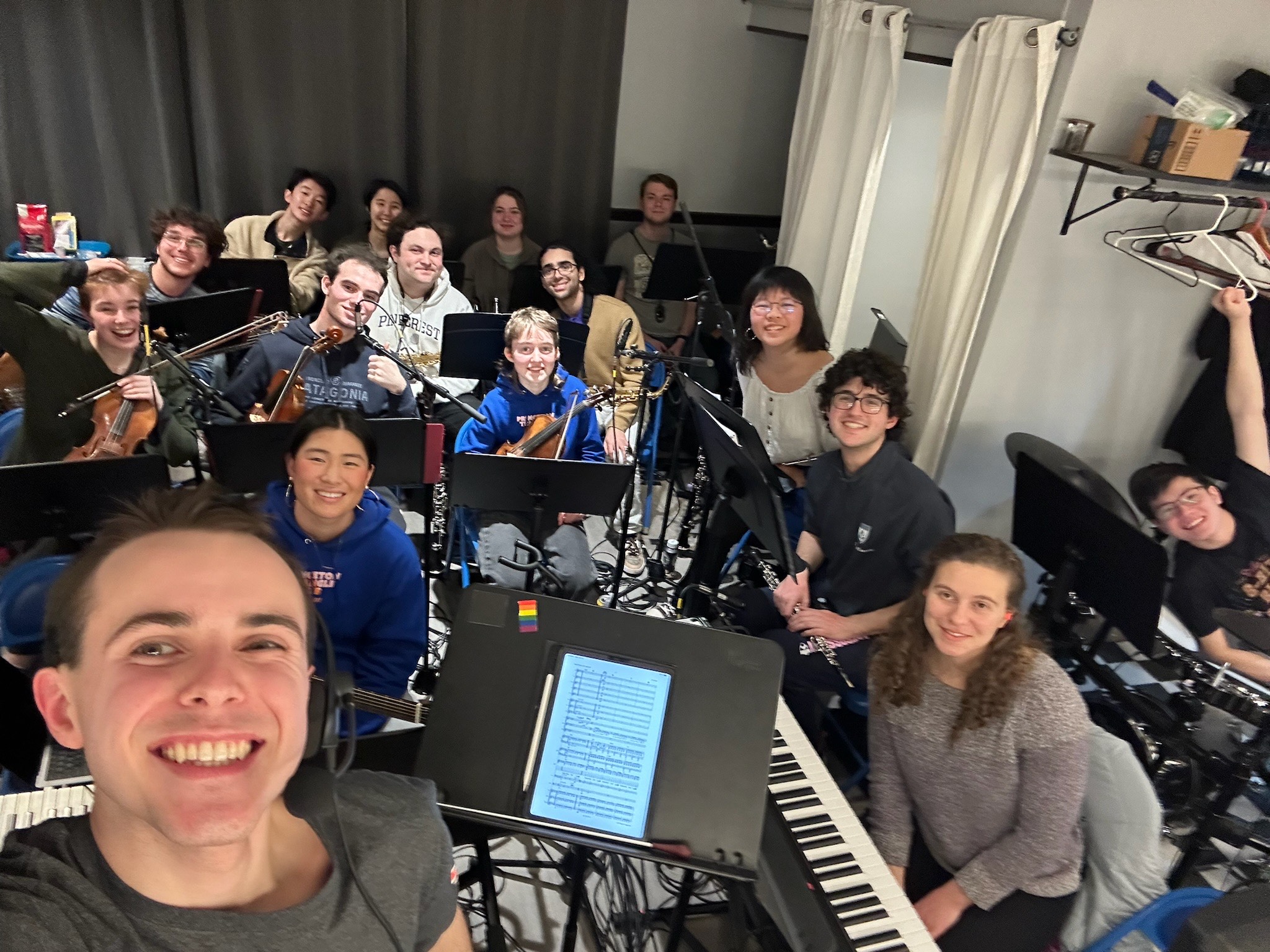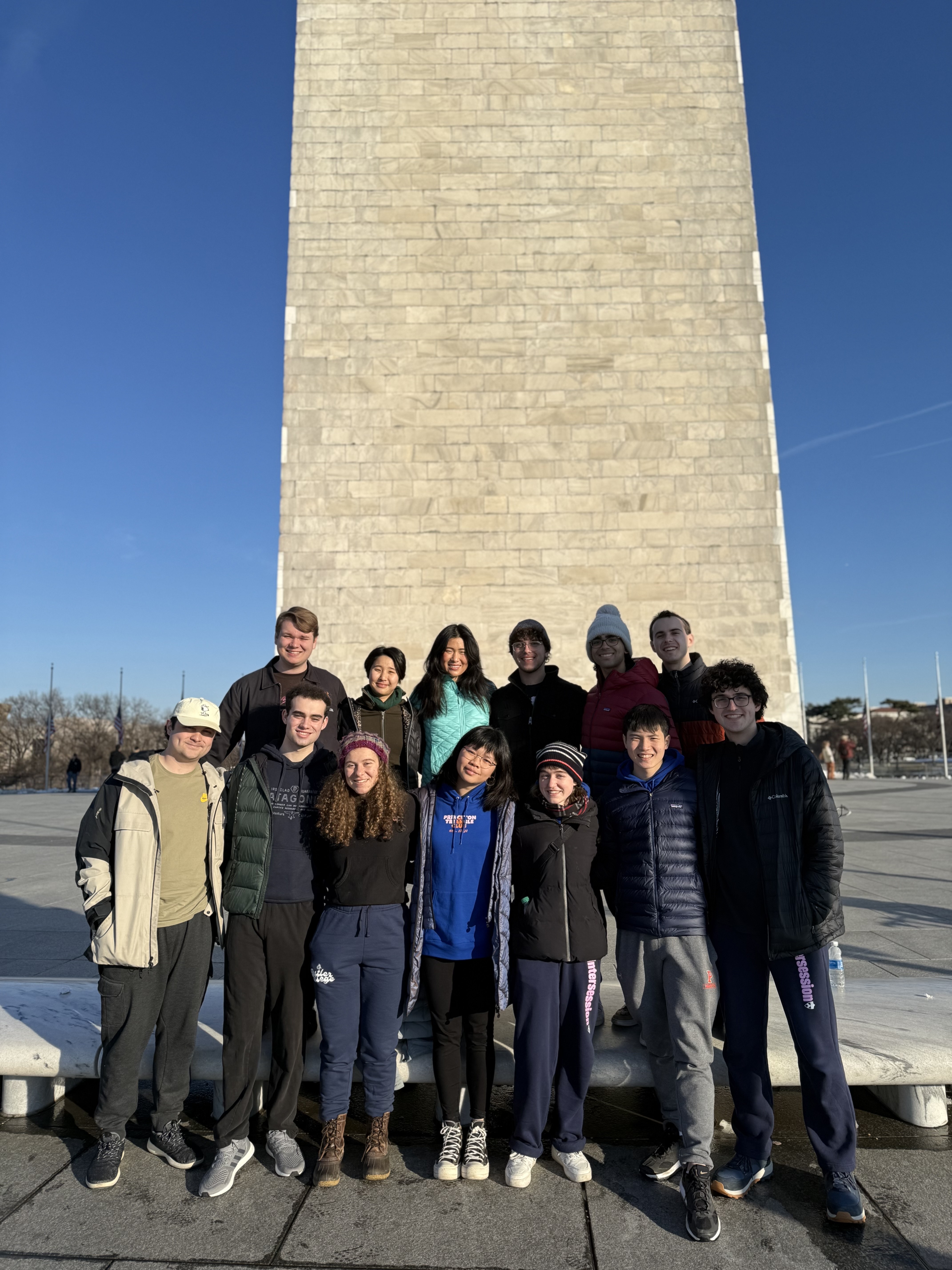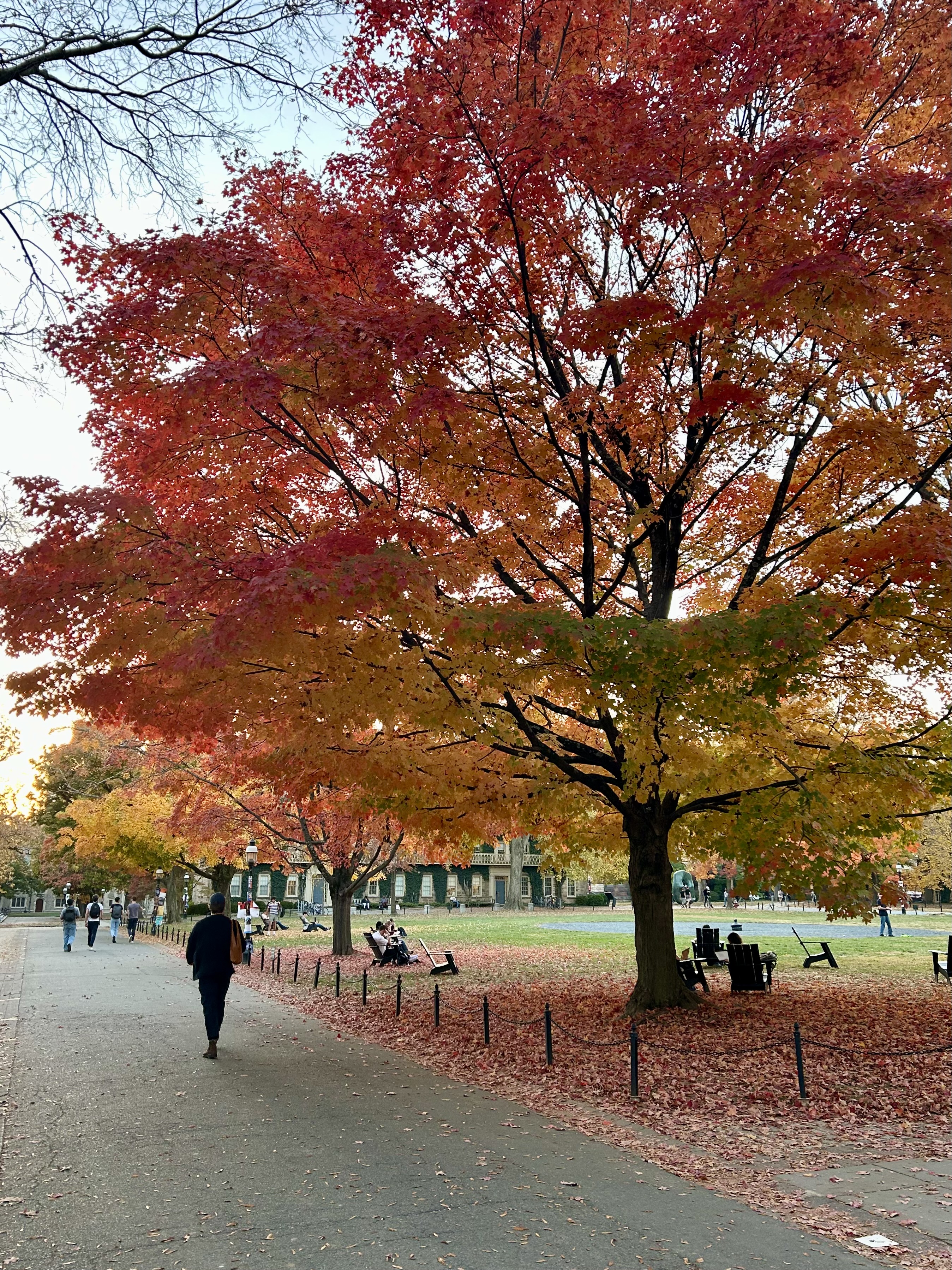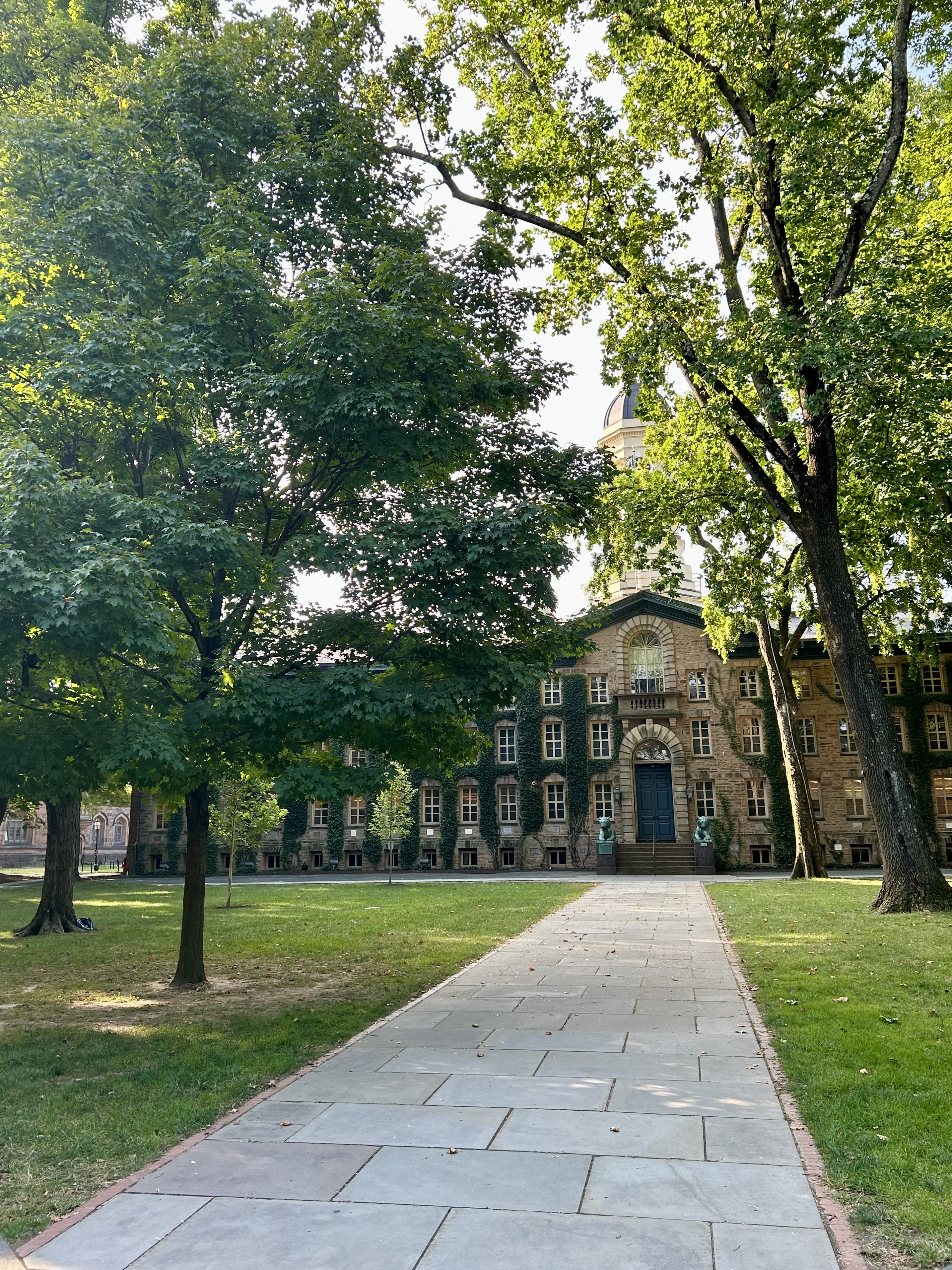One of my favorite pastimes is going for a walk around campus. Regardless of whatever is going on, I have found that a stroll through campus is always nice, never failing to present me with an opportunity to notice features I never had before and to take some time to reflect.
As I go on each walk, I get to appreciate all of my surroundings. Outside Henry Hall, which sits along Blair Walk, there is a stone engraving of George Washington crossing the Delaware — it may seem kind of random but is very cool and intricate! I discovered this engraving pretty early on in the school year, so anytime I made my Blair Walk trek to my Writing Seminar in New South last semester, I tried to remember to give Washington a shout-out :). You may have also noticed there are two tigers forming the frame of Washington’s Crossing, so I cannot forget to mention all the engraved tigers across campus. Certain entrance doors to McCosh Hall and 1879 Hall have engravings of tigers that are engaging in a variety of activities, from roaring and prowling around to sleeping, and there are 100+-year-old tigers that welcome those who walk under the archway of Campbell Hall. However, tigers continue to dominate their architectural presence apart from engravings, as there is also a tiger weathervane at the top of each corner of Holder Tower. These are only a few of many small details I have observed from my walks, but I will leave it to you to find other little hidden gems!

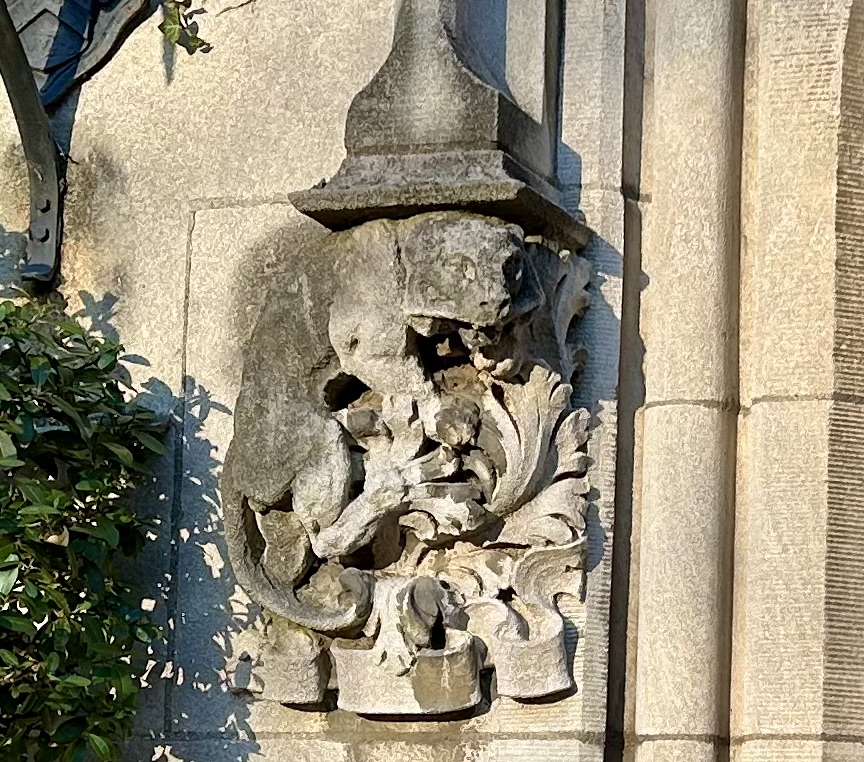
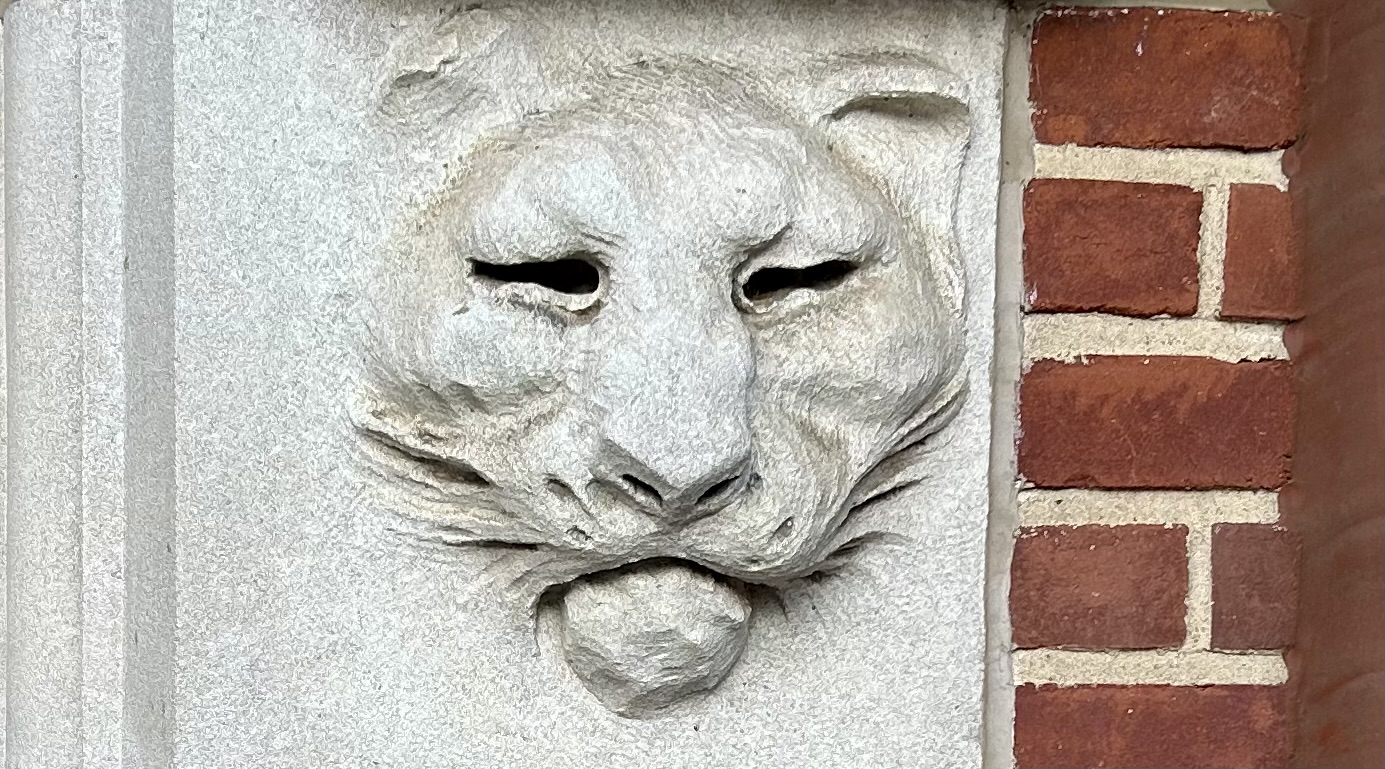
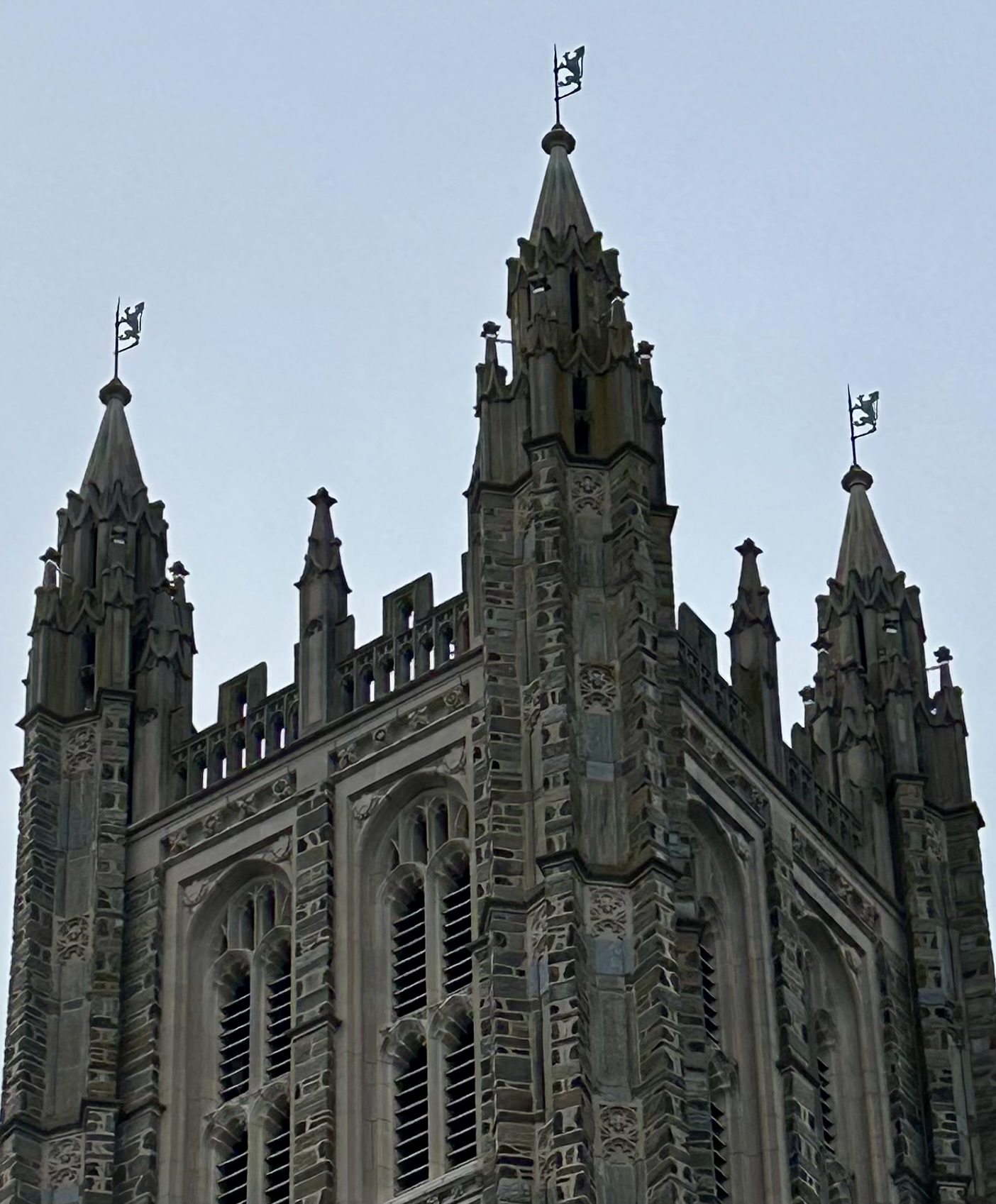
The buildings of Princeton have not just challenged my observational skills but also enabled me to appreciate the different seasons I have had here so far. When my family and I first set foot on campus — around the time of Preview — one of the first parts we saw was the area of New South, which neighbors Whitman College and is, as mentioned earlier, where my Writing Seminar was. If you have not been near New South before, there is a circle of animal-head sculptures right outside of the building. This art piece is really impressive and fascinating, but it definitely caught me off guard when I first saw it. I remember thinking to myself, “Where am I? Why are there just random statues of animal heads on a college campus?” So, when I walk by this art piece now, I cannot help but think back to this funny yet skeptical first impression of Princeton’s campus I had. Additionally, as I pass by the buildings I had my fall-semester classes in, I often reflect on the emotions I felt at the time and some of the lessons each class taught me: somewhat anxiously walking into New South for Writing-Seminar conferences, learning Spanish vocabulary in a classroom of McCosh Hall, getting to know other freshmen and more about literature in my freshman seminar in Blair Arch, to name a few. I laugh at how frequently I find myself falling into nostalgic episodes as I go on my walks — I am only a freshman, so there is really no tellin’ how much nostalgia I will be feelin’ when I am a senior!
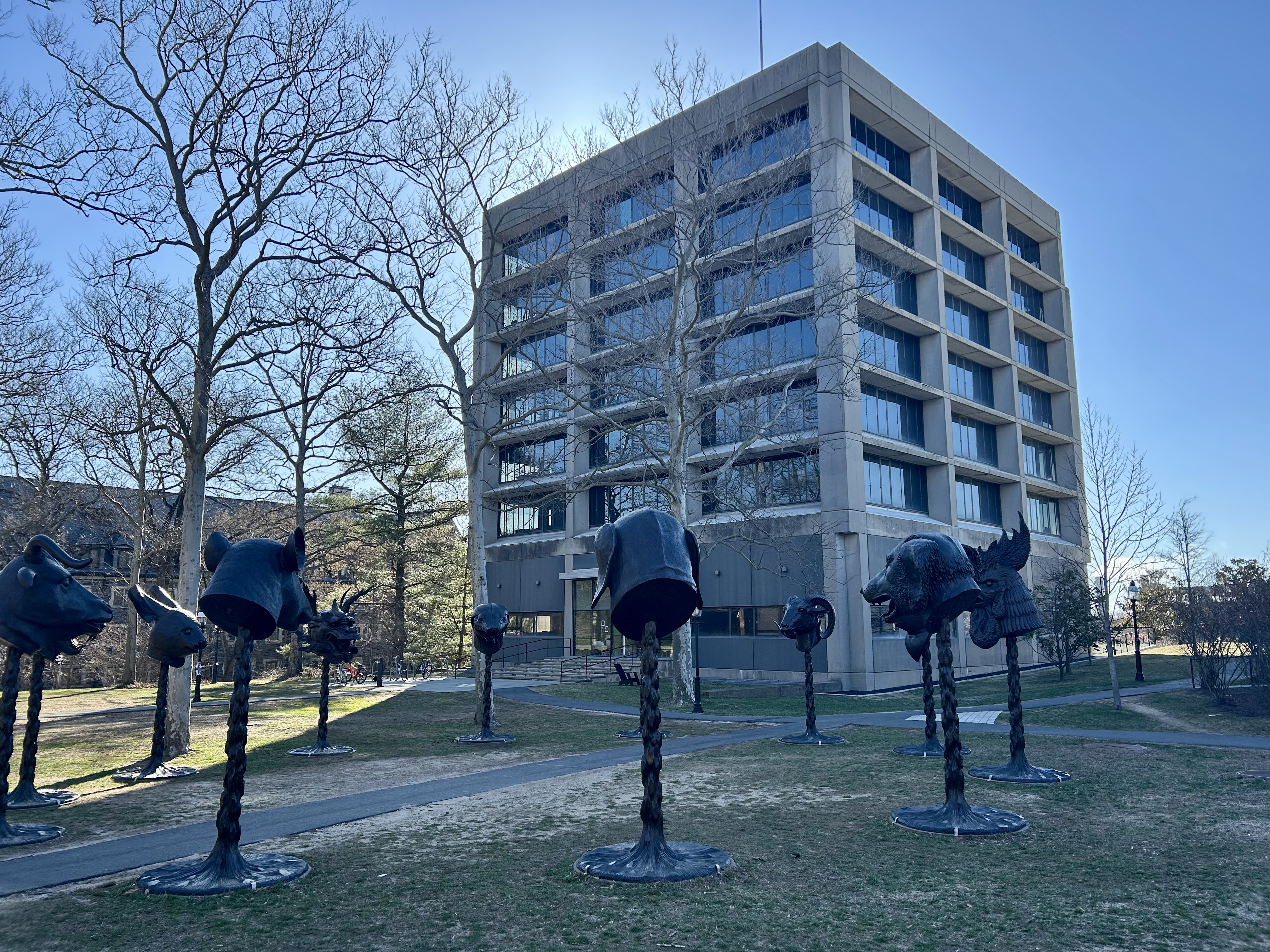
With final college decisions being released, I am sure many of you are going to be walking around different college campuses, trying to see which one feels most like home. Whether you are here for Preview or not, I know that the campus of whatever school you go to is going to be even more beautiful because you are a part of it. The buildings and surroundings we walk by on a college campus may strike our attention and leave impressions on us, but what truly makes a campus great is its people. So, as you tour different schools, try to appreciate their architectural surroundings, but also remember that the people are what make the places special — and that you will end up where you are meant to be!
